Below is a collection of archived Advertisements, Posters, Postcards, Images and more from over 50 years of Rare Things and Treasure Hunting! Enjoy!

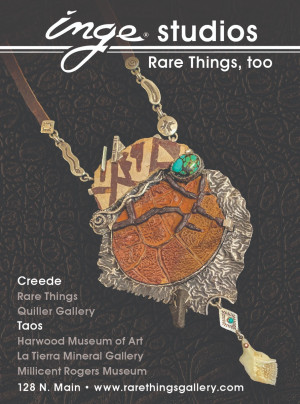
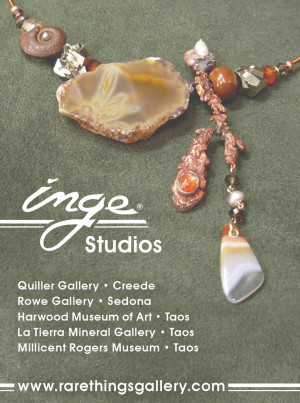
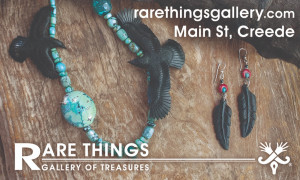
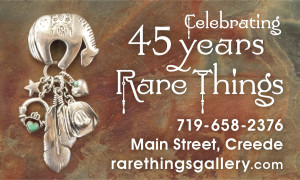
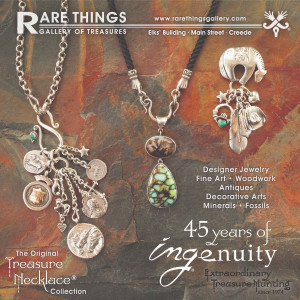
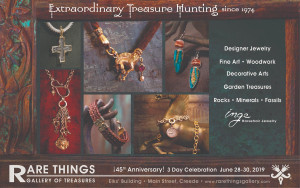

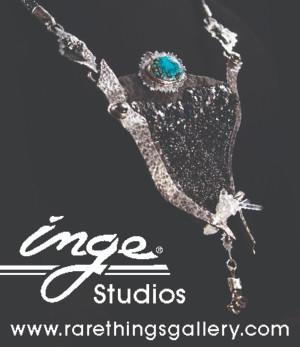
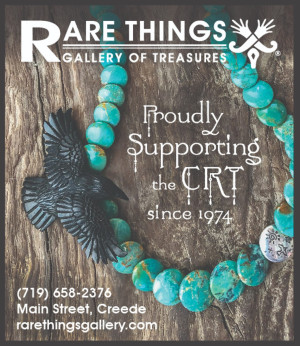
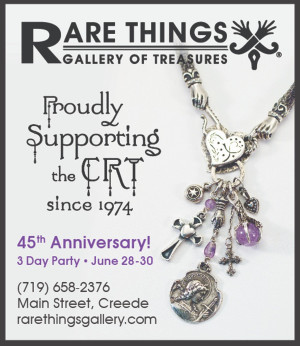

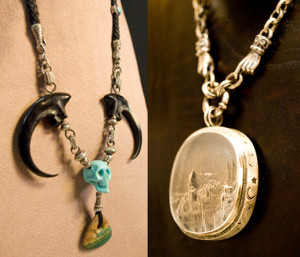
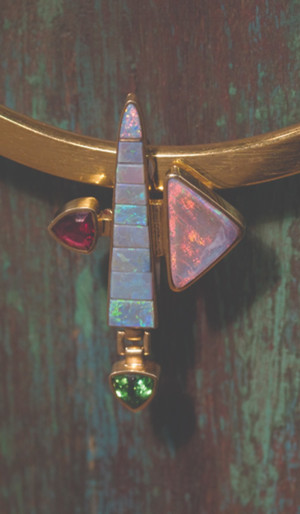
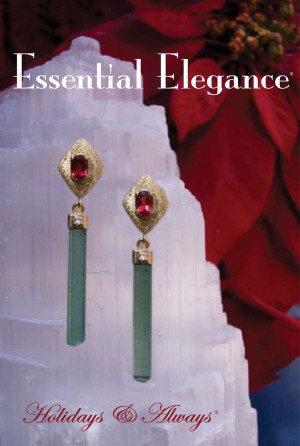

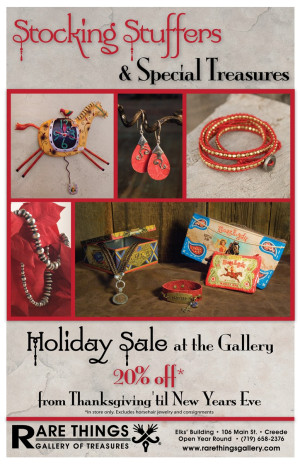
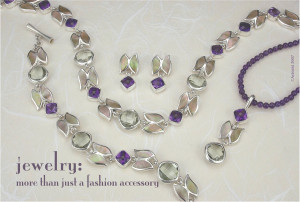
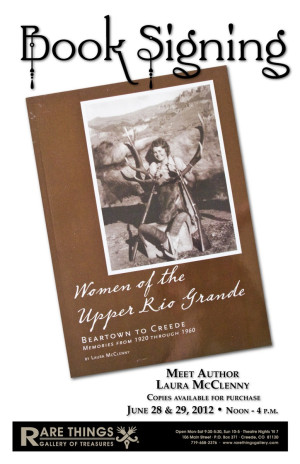
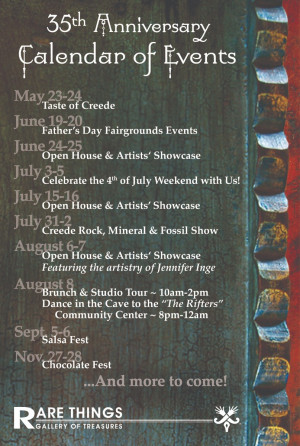
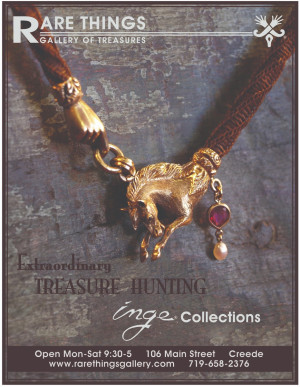
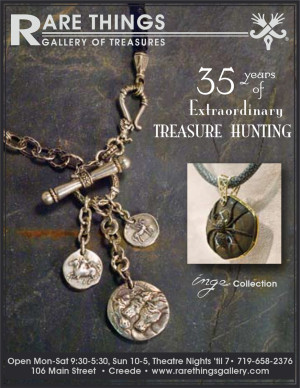
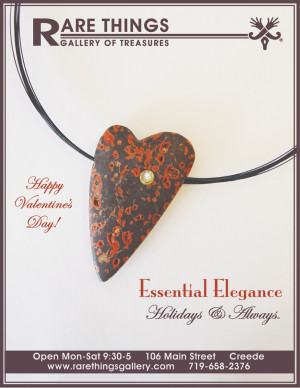
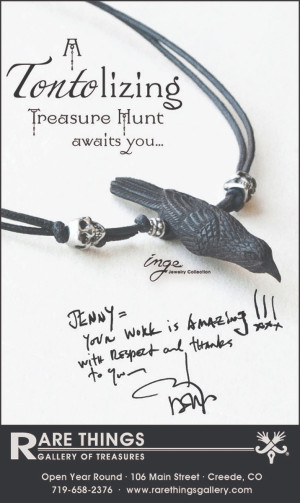
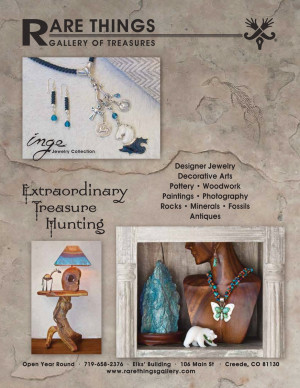
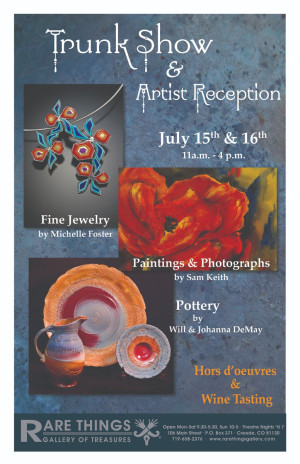
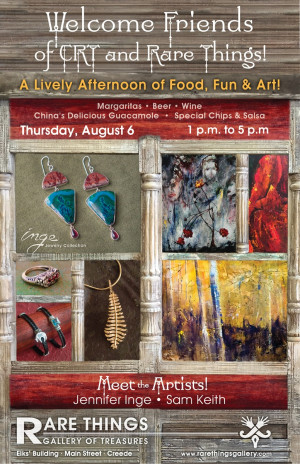
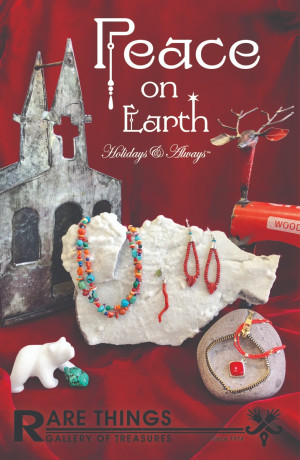

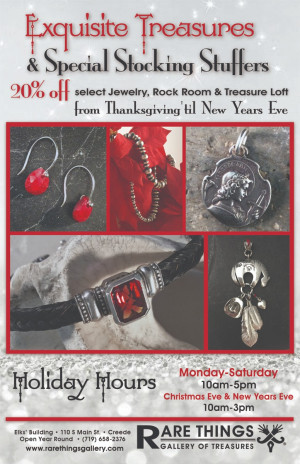
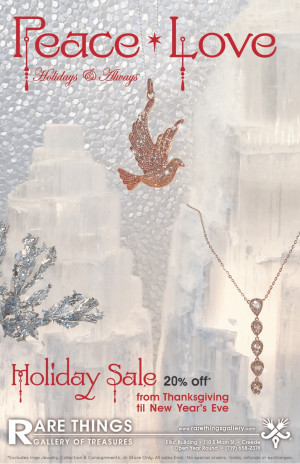
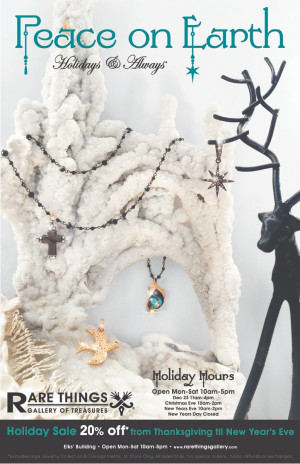
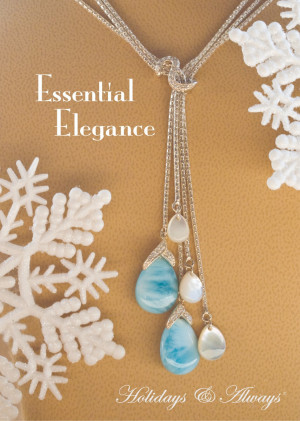
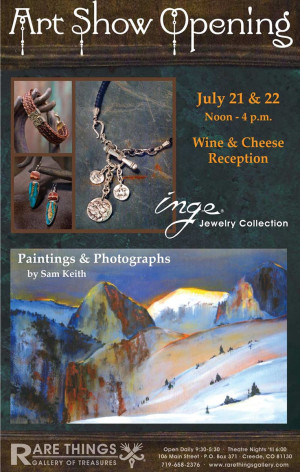

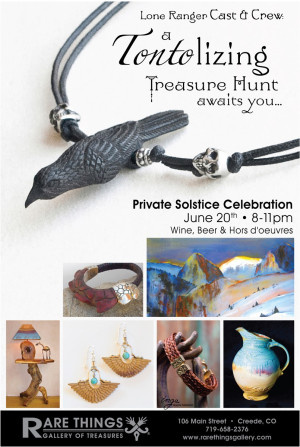
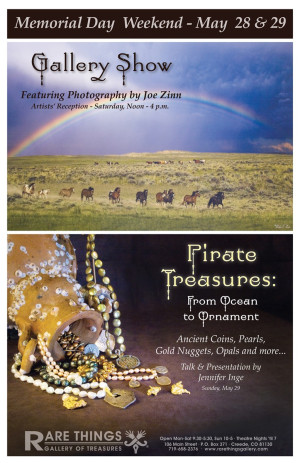
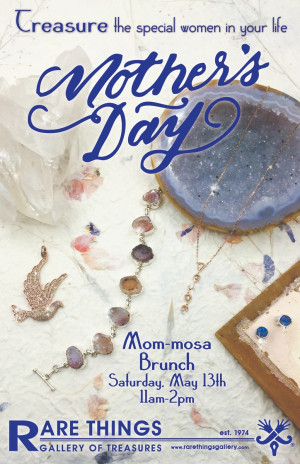
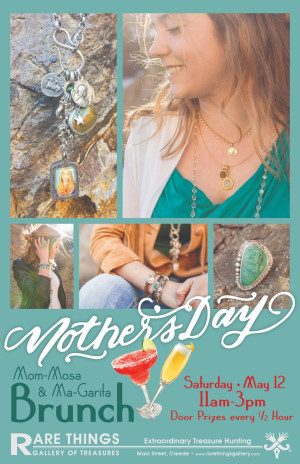
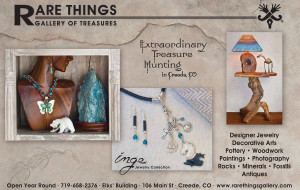
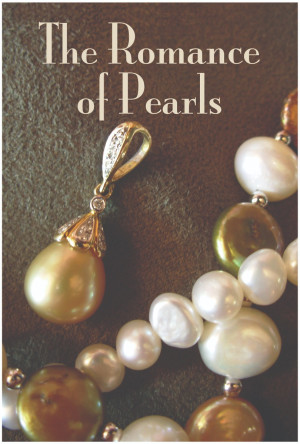

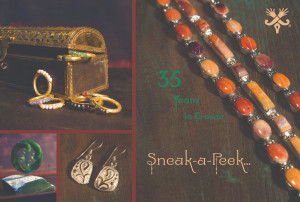
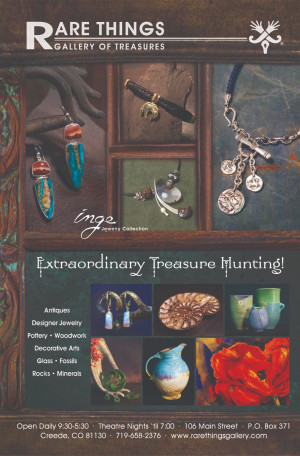
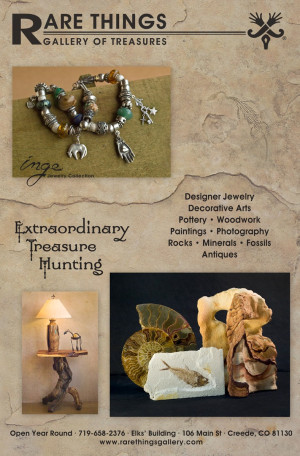
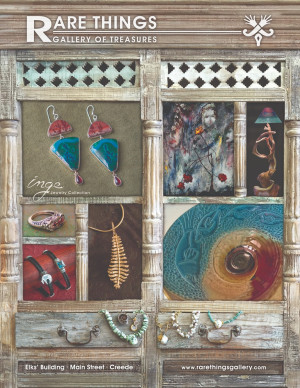
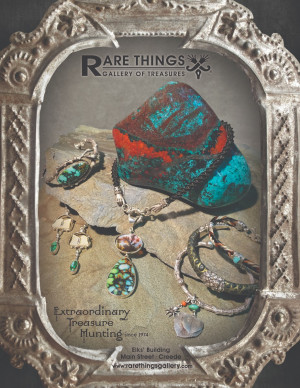
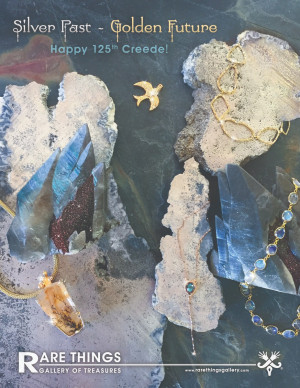
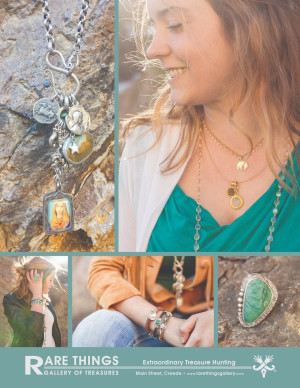
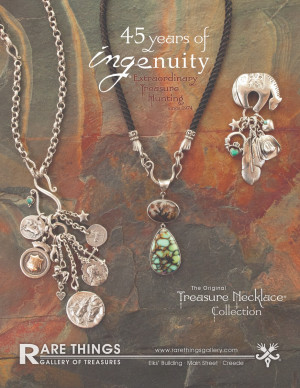
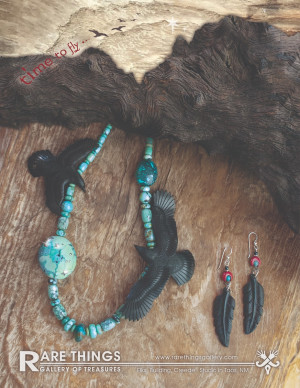
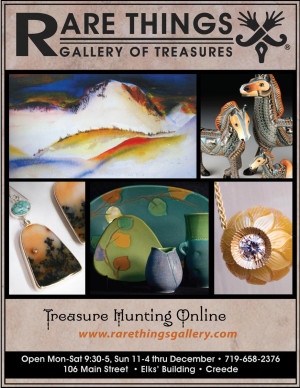
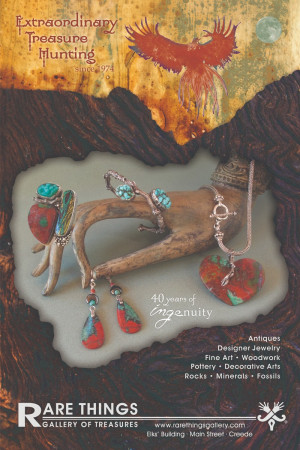
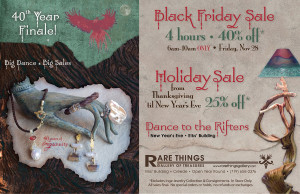
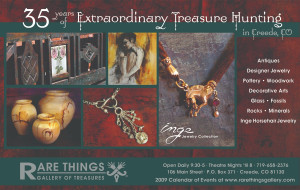
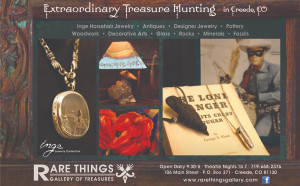
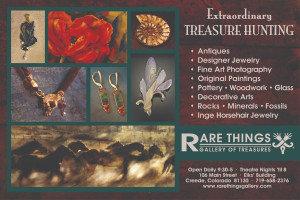
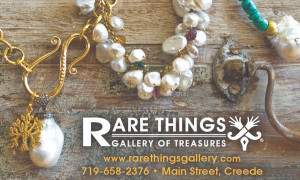
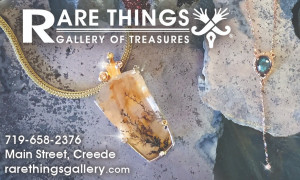
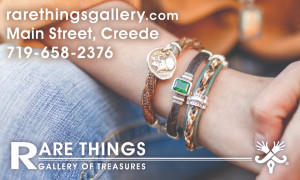
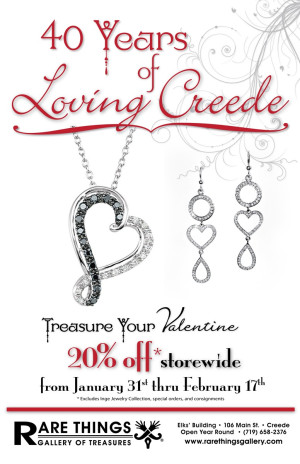
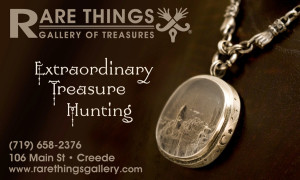

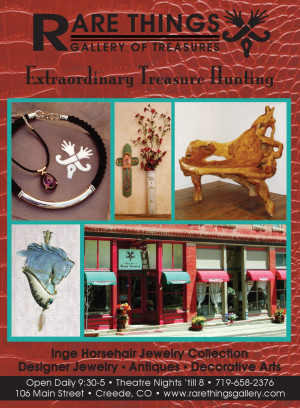
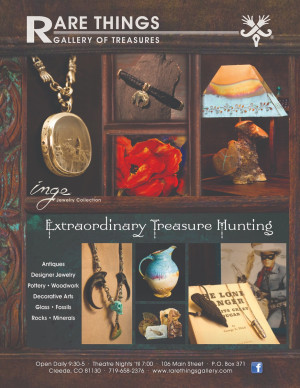
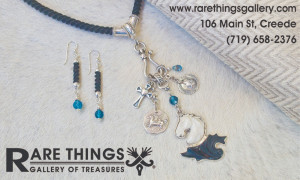


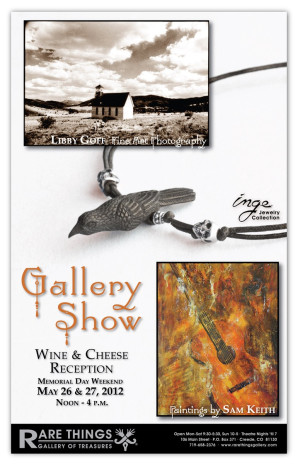
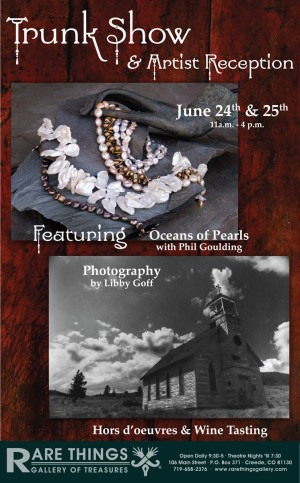
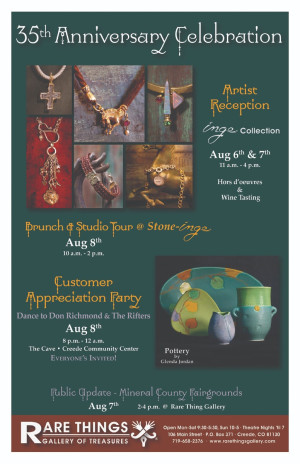
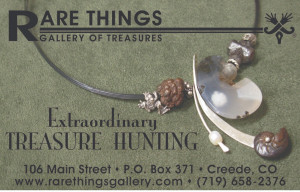
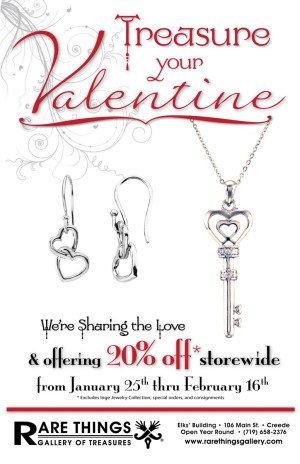
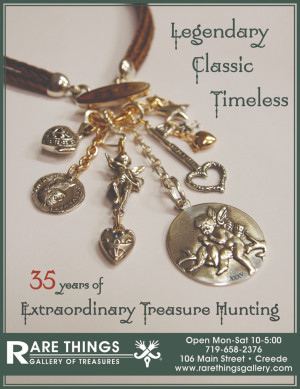
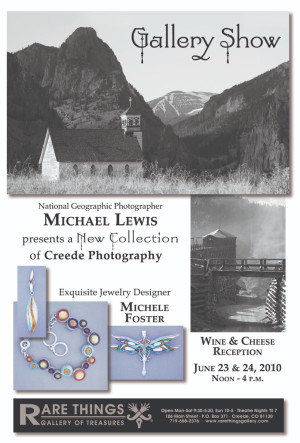

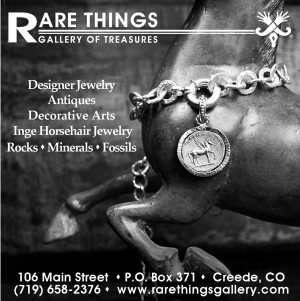
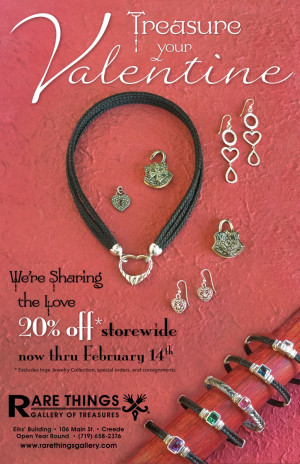
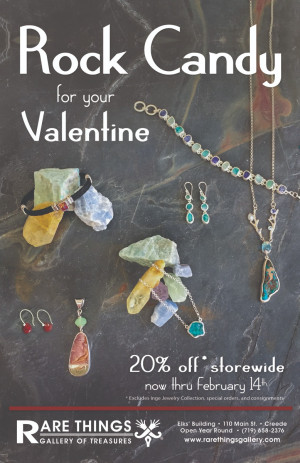
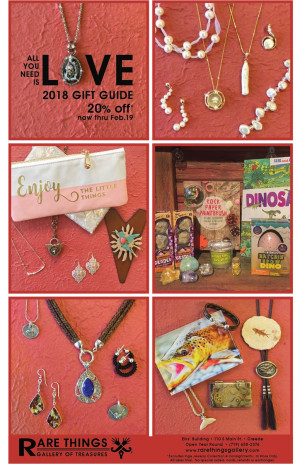
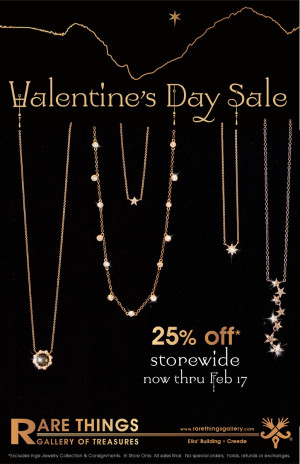
Privacy Notice
This privacy notice discloses the privacy practices for Rare Things Gallery and www.rarethingsgallery.com This privacy notice applies solely to information collected by this website. It will notify you of the following:
- What personally identifiable information is collected from you through the website, how it is used and with whom it may be shared.
- What choices are available to you regarding the use of your data.
- The security procedures in place to protect the misuse of your information.
- How you can correct any inaccuracies in the information.
Information Collection, Use, and Sharing
We are the sole owners of the information collected on this site. We only have access to/collect information that you voluntarily give us via email or other direct contact from you. We will not sell or rent this information to anyone.
We will use your information to respond to you, regarding the reason you contacted us. We will not share your information with any third party outside of our organization, other than as necessary to fulfill your request, e.g. to ship an order.
Unless you ask us not to, we may contact you via email in the future to tell you about specials, new products or services, or changes to this privacy policy.
Your Access to and Control Over Information
You may opt out of any future contacts from us at any time. You can do the following at any time by contacting us via the email address or phone number given on our website:
- See what data we have about you, if any.
- Change/correct any data we have about you.
- Have us delete any data we have about you.
- Express any concern you have about our use of your data.
Security
We take precautions to protect your information. When you submit sensitive information via the website, your information is protected both online and offline.
Wherever we collect sensitive information (such as credit card data), that information is encrypted and transmitted to us in a secure way. You can verify this by looking for a lock icon in the address bar and looking for "https" at the beginning of the address of the Web page.
While we use encryption to protect sensitive information transmitted online, we also protect your information offline. Only employees who need the information to perform a specific job (for example, billing or customer service) are granted access to personally identifiable information. The computers/servers in which we store personally identifiable information are kept in a secure environment.
If you feel that we are not abiding by this privacy policy, you should contact us immediately via telephone at 719-658-2376 or via email at This email address is being protected from spambots. You need JavaScript enabled to view it..
Registration
In order to use this website, a user must first complete the registration form. During registration a user is required to give certain information (such as name and email address). This information is used to contact you about the products/services on our site in which you have expressed interest. At your option, you may also provide demographic information (such as gender or age) about yourself, but it is not required.
Orders
We request information from you on our order form. To buy from us, you must provide contact information (like name and shipping address) and financial information (like credit card number, expiration date). This information is used for billing purposes and to fill your orders. If we have trouble processing an order, we'll use this information to contact you.
Cookies
We use "cookies" on this site. A cookie is a piece of data stored on a site visitor's hard drive to help us improve your access to our site and identify repeat visitors to our site. For instance, when we use a cookie to identify you, you would not have to log in a password more than once, thereby saving time while on our site. Cookies can also enable us to track and target the interests of our users to enhance the experience on our site. Usage of a cookie is in no way linked to any personally identifiable information on our site.
Joomla Core Capabilities
All requests to a Joomla website start a session which stores the IP address in the session data and creates a session cookie in the user's browser. The IP address is used as a security measure to help protect against potential session hijacking attacks and this information is deleted once the session has expired and its data purged. The session cookie's name is based on a randomly generated hash and therefore does not have a constant identifier. The session cookie is destroyed once the session has expired or the user has exited their browser.
When a network connection is available, a Joomla installation will attempt to communicate with the joomla.org servers for various capabilities, to include:
- Checking for updates for the Joomla application
- Help screens for core Joomla extensions
- The Install from Web service (opt-in)
- The statistics collection server (opt-in)
As with all HTTP requests, the IP address of your server will be transmitted as part of the request. For information on how Joomla processes data on its servers, please review our privacy policy.
Authentication - Cookie
In conjunction with a plugin which supports a "Remember Me" feature, such as the "System - Remember Me" plugin, this plugin creates a cookie on the user's client if a "Remember Me" checkbox is selected when logging into the website. This cookie can be identified with the prefix `joomla_remember_me` and is used to automatically log users into the website when they visit and are not already logged in.
CAPTCHA - Invisible reCAPTCHA
The Invisible reCAPTCHA plugin integrates with Google's reCAPTCHA system as a spam protection service. As part of this service, the IP address of the user answering the captcha challenge is transmitted to Google.
CAPTCHA - reCAPTCHA
The reCAPTCHA plugin integrates with Google's reCAPTCHA system as a spam protection service. As part of this service, the IP address of the user answering the captcha challenge is transmitted to Google.
HikaShop
HikaShop stores by default the IP address when someone posts a vote or a comment on a product, when someone adds something to their cart, when someone registers on the website through HikaShop, and when someone places an order through HikaShop. HikaShop has options in its configuration to deactivate these separately. You should first make sure which ones are necessary for your country's administration, and which ones cannot be collected due to the privacy laws in your country.
HikaShop stores the addresses the customer uses for his carts / orders. If you don't need some of the information requested by default by HikaShop for the addresses, you can go in the menu Display>Custom fields of HikaShop to disable the ones you don't need.
Privacy
In order to process information requests, information about the user must be collected and logged for the purposes of retaining an audit log. The request system is based on an individual's email address which will be used to link the request to an existing site user if able.
Any of the designs presented in our Stock Design Catalog can be crafted from your own horse’s hair to create a unique and lasting keepsake. Because custom hair pieces are extremely time consuming (each hair is counted, quality checked and cleaned before braiding), add 20% to stock prices for tail hair, and 30% for pulled ‘wads’ or main hair. Please allow 12 weeks for custom orders.
Instructions for Collecting Horsehair
- Pick the longest hairs at the bottom of the tail.
- While lifting them to the side with one hand, pull the shorter hairs away with the other hand.
- Pull away as many short hairs as possible so that you are cutting only the long hairs
- Cut close to the tail bone.
- Cut 2-4 bunches from different places on the tail so as not to take too big a chunk out of one place.
- The final bundle should be about a 1/4” (about a pencil or little finger) in diameter.
- If you wash the hair, make sure it is completely dry before putting it in a zip-lock bag. Clearly print your name and phone number on the bag with a permanent marker.
View our Stock Design Catalog
Place a Custom Order: 719-658-2376
TRADITIONAL
Traditionally, a birthstone is associated with each month of the year. For example, the birthstone for January is a garnet, while lucky babies born in April get a diamond as their birthstone.
The origin of birthstones is believed to date back to the breastplate of Aaron which contained twelve gemstones representing the twelve tribes of Israel. The current list dates back to 1912 with only one addition since then – the tanzanite was added to December.
There are numerous legends and myths about birthstone healing powers and their therapeutic influence. According to these legends, wearing a gemstone during its assigned month heightened its healing powers. For the full effect, individuals needed to own all twelve and alternate them monthly.
MODERN
In 1912, in an effort to standardize birthstones, the (American) National Association of Jewelers met in Kansas and officially adopted a list. The Jewelry Industry Council of America updated the list in 1952 by adding alexandrite to June and citrine to November; specifying pink tourmaline for October; replacing December's lapis with zircon; and switching the primary/alternative gems in March. The most recent change occurred in October 2002, with the addition of tanzanite as a December birthstone.Britain's National Association of Goldsmiths created their own standardized list of birthstones in 1937.
BIRTHSTONES BY CULTURE
Month 15th- 20th century U.S. (1912) U.S. (2013) Britain (2013) Hindu
January garnet garnet garnet garnet serpent stone
February amethyst, hyacinth, pearl amethyst amethyst amethyst chandrakanta
March heliotrope (a.k.a. bloodstone),jasper heliotrope, aquamarine aquamarine, heliotrope aquamarine, heliotrope Gold Siva-linga
April diamond, sapphire diamond diamond diamond, rock crystal diamond
May emerald, agate emerald emerald emerald, chrysoprase emerald
June cat's eye, turquoise, agate pearl, moonstone pearl, moonstone, alexandrite pearl, moonstone pearl
July turquoise, onyx ruby ruby ruby, carnelian sapphire
August sardonyx, carnelian, moonstone, topaz sardonyx, peridot peridot peridot, sardonyx ruby
September chrysolite sapphire sapphire sapphire, lapis lazuli zircon
October opal, aquamarine opal, tourmaline opal, tourmaline opal coral
November topaz, pearl topaz topaz, citrine topaz, citrine cat's-eye
December heliotrope, ruby turquoise, lapis lazuli turquoise, zircon, tanzanite tanzanite, turquoise topaz
ZODIAC
Early civilizations in both India and Babylon as far back as 3000 BC attributed rare and beautiful gemstones with magical properties. The early gem buyers sought advice from astrologers first, in hopes that they could influence the forces that were identified with the planets in their favor. There was no formal classification of gemstones, a gem was assigned each sign of the zodiac based on a color system. Color was thought to unleash the power attributed to the stone.The Indian and Babylonian systems both linked the ruling planets with their corresponding gems, giving rise to the zodiac type system that we use today.
Sign Dates Stone
Aquarius 21 January – 21 February garnet
Pisces 22 February – 21 March amethyst
Aries 22 March – 20 April heliotrope
Taurus 21 April – 21 May sapphire
Gemini 22 May – 21 June agate
Cancer 21 June – 22 July emerald
Leo 23 July – 22 August onyx
Virgo 23 August – 22 September carnelian
Libra 23 September – 23 October chrysolite
Scorpio 24 October – 21 November beryl
Sagittarius 22 November – 21 December topaz
Capricorn 22 December – 21 January ruby
JANUARY
Traditional: Garnet Modern: Garnet Astrological: Aquarius(21 January – 21 February):Garnet Capricorn (22 December – 21 January): Ruby
Garnet, the birthstone for January, signifies eternal friendship and trust and is the perfect gift for a friend. Garnet, derived from the word granatum, means seed, and is called so because of the gemstone's resemblance to a pomegranate seed. References to the gemstone dates back to 3100 B.C., when the Egyptians used garnets as inlays in jewelry. Garnet is the name of a group of minerals that comes in a rainbow of colors, from the deep red of the pyrope garnet to the vibrant green of tsavorites. Today, the most important sources for garnet are Africa, Sri Lanka, and India.
FEBRUARY
Traditional: Amethyst Modern: Amethyst Astrological: Pisces (22 February – 21 March): Amethyst Aries (22 March – 20 April): Heliotrope
Amethyst, the gemstone believed by ancient Greeks and Romans to ward off the intoxicating powers of Bacchus, also is said to keep the wearer clear-headed and quick-witted. Throughout history, the gemstone has been associated with many myths, legends, religions, and numerous cultures. English regalia were even decorated with amethysts during the Middle Ages to symbolize royalty. Amethyst is purple quartz, a beautiful blend of violet and red that can be found in every corner of the earth. Historically, the finest amethyst were found in Russia and were featured in much royal European jewelry. Today, while Brazil is the primary source of this gemstone, fine material can be found elsewhere, especially in Zambia.
MARCH
Traditional: Heliotrope (bloodstone) Modern: Aquamarine Astrological: Pisces (22 February – 21 March):Amethyst Aries (22 March – 20 April): Heliotrope
The two birthstones for March are aquamarine and bloodstone.
Aquamarine:
The name aquamarine is derived from the Latin word aqua, meaning water, and marina, meaning the sea. This gemstone was believed to protect sailors, as well as to guarantee a safe voyage. The serene color of aquamarine is said to cool the temper, allowing the wearer to remain calm and levelheaded. Its pale, cool color beautifully complements spring and summer wardrobes. Aquamarine is most often light in tone and ranges from greenish blue to blue-green; the color usually is more intense in larger stones. This gemstone is mined mainly in Brazil, but also is found in Nigeria, Madagascar, Zambia, Pakistan, and Mozambique.
Bloodstone:
The second birthstone for March is bloodstone, a dark-green jasper flecked with vivid red spots of iron oxide. This ancient stone was used by the Babylonians to make seals and amulets and was believed to have healing powers — especially for blood disorders. It is sometimes called the martyr's stone as legend tells that it was created when drops of Christ's blood stained some jasper at the foot of the cross. Generally found embedded in rocks or in riverbeds as pebbles, primary sources for this stone are India, Brazil, and Australia.
APRIL
Traditional: Diamond Modern: Diamond Astrological: Aries (22 March – 20 April): Heliotrope Taurus (21 April – 21 May): Sapphire
The diamond is the traditional birthstone of April and is thought to provide the wearer with better relationships and an increase in inner strength. Wearing diamonds is purported to bring other benefits such as balance, clarity and abundance. It's also symbolic of eternal love. Adopted from the Greek work "adamas," meaning invincible, diamonds come in a wide range of colors such as black, blue, green, pink, red, purple, orange and yellow. The color is dependent upon the type of impurities that are present in the stone. Yellow stones have minuscule traces of nitrogen while blue ones contain boron. As told through the Encarta, Sanskrit texts dating back before 400 B.C. found that people associated significant value and wonderment with crystals. There is also significant research that dates back to the 1330s showing diamond cutting in Venice. The diamond trading business flourished towards the 15th century with the opening of Eastern trade routes. Ancient theories touting the magical powers of diamonds were prevalent: some thought lightning bolts formed diamonds, while other theories asserted that diamonds were the tears of God. During the Middle Ages, diamonds were thought to hold healing powers and to cure ailments stemming from the pituitary gland and brain. By heating the crystal and taking it to bed, it was thought to draw out the harmful toxins that were crippling the body. It was believed that diamonds could also have an effect on an individual’s balance and clarity and could boost their energy when combined with other crystals like amethyst. The diamond as the April gemstone has garnered the hearts of many and is the most coveted crystal to date. Deemed as the King of all birthstones, diamonds make the ideal choice for an April birthday gift.
MAY
Traditional: Emerald Modern: Emerald Astrological: Taurus (21 April – 21 May): Sapphire Gemini (22 May – 21 June): Agate
As the birthstone for May, the emerald, a symbol of rebirth, is believed to grant the owner foresight, good fortune, and youth. Emerald, derived from the word smaragdus, meaning green in Greek, was mined in Egypt as early as 330 B.C. Today, most of the world’s emeralds are mined in Colombia, Brazil, Afghanistan, and Zambia.
JUNE
Traditional: Pearl, Moonstone Modern: Alexandrite Astrological: Gemini (22 May – 21 June): Agate Cancer (21 June – 22 July): Emerald
June counts three gems as birthstones - pearl, alexandrite, and moonstone.
Pearl:
Historically, pearls have been used as an adornment for centuries. They were one of the favorite gem materials of the Roman Empire, and later in Tudor England, the 1500s were known as the pearl age. Pearls are unique as they are the only gems from living sea creatures and require no faceting or polishing to reveal their natural beauty. In the early 1900s, the first successful commercial culturing of round saltwater pearls began. Since the 1920s, cultured pearls have almost completely replaced natural pearls in the market.
Alexandrite:
A relatively modern gem, Alexandrite, was first discovered in Russia in 1831 during the reign of its namesake, Czar Alexander II, and is an extremely rare chrysoberyl with chameleon-like qualities. Its color is a lovely green in both daylight and fluorescent light; it changes color to a purplish red in incandescent light. Due to its rarity, some jewelers stock synthetic versions of this enchanting gemstone. (Synthetic gemstones are man-made alternatives to the natural material, possessing the same physical, optical, and chemical properties as the natural gemstone.)
Moonstone:
The third birthstone for June is the Moonstone. It was given its name by the Roman natural historian Pliny, who wrote that moonstone's appearance altered with the phases of the moon — a belief that held until well after the sixteenth century. A phenomenal gemstone, moonstones show a floating play of light (called adularescence) and sometimes show either a multirayed star or a cat's eye. Considered a sacred stone in India, moonstones often are displayed on a background of yellow (a sacred color) and are believed to encapsulate within the stone a spirit whose purpose is to bring good fortune. Part of the family of minerals called feldspar, moonstone occurs in many igneous and metamorphic rocks and comes in a variety of colors such as green, blue, peach, and champagne. The most prized moonstones are from Sri Lanka. India, Australia, the United States, Mayanmar, and Madagascar are also sources.
JULY
Traditional: Ruby Modern: Ruby Astrological: Cancer (21 June – 22 July): Emerald Leo (23 July – 22 August): Onyx
There’s no better way to demonstrate your love than by giving a ruby in celebration of a July birthday, or a 40th anniversary! Rubies arouse the senses, stir the imagination, and are said to guarantee health, wisdom, wealth and success in love. Ruby is a variety of the gems species corundum. It is harder than any natural gemstone except diamond, which means a ruby is durable enough for everyday wear. Fine-quality ruby is extremely rare, and the color of the gem is most important to its value. The most prized color is a medium or medium dark vivid red or slightly purplish red. If the gem is too light or has too much purple or orange, it will be called a fancy-color sapphire.
AUGUST
Traditional: Sardonyx, Peridot Modern: Peridot Astrological: Leo (23 July – 22 August): Onyx Virgo (23 August – 22 September): Carnelian
Two birthstones are available for August birthdays: Peridot and Sardonyx.
Peridot:
Peridot is said to host magical powers and healing properties to protect against nightmares and to bring the wearer power, influence, and a wonderful year. As peridot is a gemstone that forms deep inside the Earth and is brought to the surface by volcanoes; in Hawaii, peridot symbolizes the tears of Pele, the goddess of fire and volcanoes. Today, most of the peridot supply comes from Arizona. Other sources are China, Myanmar, and Pakistan. This gemstone comes in several color variations ranging from yellowish green to brown, but most consumers are attracted to the bright lime greens and olive greens.
Sardonyx:
Sardonyx is a form of onyx and is recognized by its layers of reddish brown and white banding. It was popular with the ancient Greeks and Romans who carried into battle talismans of sardonyx engraved with images of heroes such as Mars or Hercules, believing that this would bring courage and victory. Because of its attractive banding, sardonyx has long been used to fashion cameos (carved raised figures) and intaglios (the reverse of cameos). This gemstone is found throughout the world. The most attractive specimens are found in India, but material also is mined in Czechoslovakia, Brazil, Uruguay, Germany, and in the United States.
SEPTEMBER
Traditional: Sapphire Modern: Sapphire Astrological: Virgo (23 August – 22 September): Carnelian Libra(23 September – 23 October): Chrysolite
Sapphire, the September birthstone, has been popular since the Middle Ages and, according to folklore, will protect your loved ones from envy and harm. Medieval clergy wore sapphires to symbolize heaven, while commoners thought the gem attracted heavenly blessings. Blue sapphires range from very light to very dark greenish or violetish blue, as well as various shades of pure blue. The most prized colors are a medium to medium dark blue or slightly violetish blue. Sapphire is a variety of the gem species corundum and occurs in all colors of the rainbow. Pink, purple, green, orange, or yellow corundum are known by their color (pink sapphire, green sapphire). Ruby is the red variety of corundum.
OCTOBER
Traditional: Opal, Tourmaline Modern: Opal, Tourmaline Astrological: Libra(23 September – 23 October): Chrysolite Scorpio(24 October – 21 November): Beryl
October is another month with two birthstone choices – Tourmaline and Opal.
Tourmaline:
Tourmaline has become a favorite gemstone among jewelry designers and gem collectors the world over. Since it is available in a wide variety of colors, it is ideally suited to almost anyone's taste. Tourmaline also is known for displaying several colors in the same gemstone. These bi-color or tri-color gems are formed in many combinations; gemstones with clear color distinctions are highly prized. One multi-color variety is known as watermelon tourmaline, and features green, pink, and white color bands. To resemble its namesake, the gemstone is cut into thin slices having a pink center, white ring, and green edge. Tourmaline is found in many localities including Brazil, Afghanistan, East Africa, and the United States.
Opal:
The name opal derives from the Greek Opallos, meaning "to see a change (of color)." Opals range in color from milky white to black with flashes of yellow, orange, green, red, and blue. An opal's beauty is the product of contrast between its color play and its background. Opal is a formation of non-crystalline silica gel that seeped into crevices in the sedimentary strata. Through time and nature's heating and molding processes, the gel hardened into the form of opals. The opal is composed of particles closely packed in spherical arrangements. When packed together in a regular pattern, a three-dimensional array of spaces are created that give opal its radiance.
NOVEMBER
Traditional: Topaz Modern: Citrine Astrological: Scorpio(24 October – 21 November): Beryl Sagittarius(22 November – 21 December): Topaz
Two gems are appropriate for November birthdays - Topaz and Citrine.
Topaz:
Topaz is a gemstone available in a rich rainbow of colors. Prized for several thousand years in antiquity, all yellow gems in antiquity were called topaz. Often confused with citrine quartz (yellow) and smoky quartz (brown), quartz and topaz are separate and unrelated mineral species. The most prized color of topaz is called Imperial topaz after the Russian Czars of the 1800s and features a magnificent orange body color with pinkish undertones. Topaz also comes in yellow, pink, purple, orange, and the many popular blue tones.
Citrine:
Citrine, the other birthstone for November is known as the "healing quartz". This golden gemstone is said to support vitality and health while encouraging and guiding hope, energy and warmth within the wearer. Citrine can be found in a variety of shades ranging from pastel yellow to dark brownish orange. It is one of the most affordable of gemstones and plentiful in nature. Citrine is found most frequently in Brazil, Bolivia, and Spain.
DECEMBER
Traditional: Turquoise, Lapis Lazuli Modern: Turquoise, Zircon, Tanzanite Astrological: Sagittarius(22 November – 21 December): Topaz Capricorn(22 December – 21 January): Ruby
The three birthstones associated with December are Tanzanite, Zircon, and Turquoise.
Tanzanite:
Discovered in the late 1960s in Tanzania, and found exclusively in this tiny area of the world, tanzanite exhibits a rich violet-blue color for which the gemstone is treasured; often it is heat-treated to achieve this color. Colors range from blue to purple, and tanzanites that are medium dark in tone, vivid in saturation, and slightly violet blue command premium prices. As tanzanite can be less expensive than sapphire, it often was purchased as an alternative. However, it has increased in popularity and now is valued more for its own beauty and brilliance than as a sapphire substitute.
Zircon:
Derived from the Arabic words zar and gun, meaning gold and color, zircon is found in a wide range of colors such as: blue, yellow, orange, brown, green, colorless, and red (the most prized color). For many years colorless zircon was used to imitate diamonds. Folk wisdom grants zircon the power to relieve pain, whet the appetite, protect travelers from disease and injury, to ensure a warm welcome, and to prevent nightmares guaranteeing a deep, tranquil sleep. Major sources of zircon are the Chanthaburi area of Thailand, the Palin area of Cambodia, and the southern part of Vietnam.
Turquoise:
The name turquoise, from the French expression Pierre tourques or Turkish stone, originated in the thirteenth century and describes one of the oldest known gemstones. Turquoise varies in color from greenish blue, through robin's egg blue, to sky blue shades. Its transparency ranges from translucent to opaque. Turquoise is plentiful and is available in a wide range of sizes. It is most often used for beads, cabochons, carvings, and inlays. Although its popularity fluctuates in fashion, it is a perennial favorite in the American Southwest.
REFERENCES:
The American Gem Society - www.americangemsociety.org/birthstones
Gemology Online - www.gemologyonline.com/birthstones.html
Wikipedia - en.wikipedia.org/wiki/Birthstones

















































































